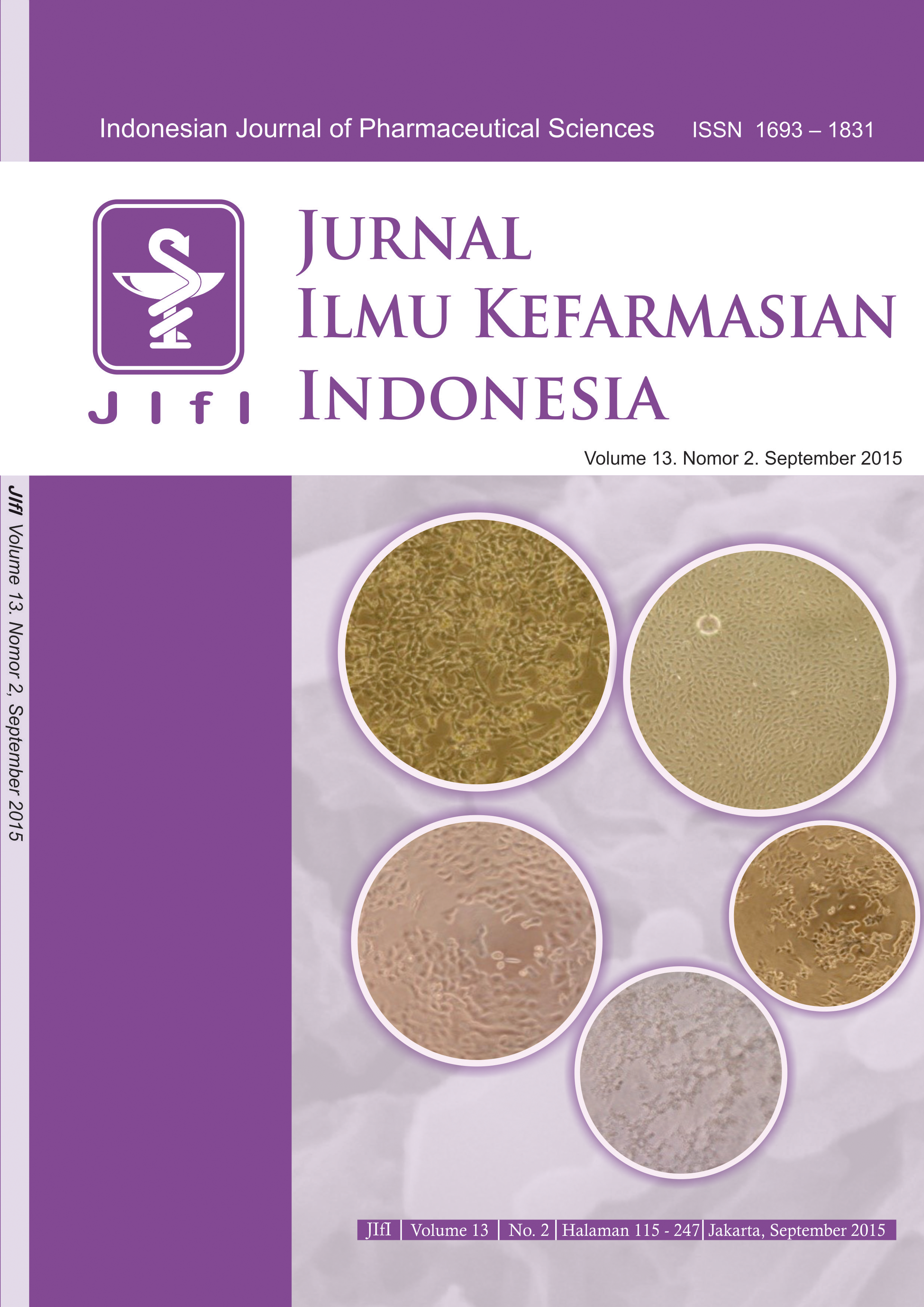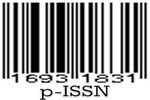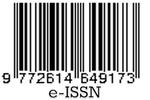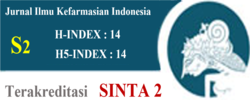Formulasi dan Uji Penetrasi In Vitro Sediaan Gel Transfersom Mengandung Kofein sebagai Antiselulit
Abstract
Transfersom merupakan vesikel nano yang bersifat deformabel sehingga mampu berpenetrasi sampai ke lapisan kulit yang lebih dalam. Kofein memiliki khasiat sebagai antiselulit. Penelitian ini bertujuan untuk formulasi dan mengetahui kemampuan daya penetrasi gel transfersom kofein dibandingkan dengan gel kofein tanpa transfersom. Empat formula transfersom dibuat dengan konsentrasi kofein yang berbeda (1; 2; 3; 5%) menggunakan metode hidrasi lapis tipis. Suspensi formula 4 dengan ukuran partikel 202,35 nm, indeks polidipersitas 0,1090 dan efisiensi jerapan 58,91% dipilih untuk sediaan gel. Uji penetrasi dilakukan secara in vitro dengan sel difusi Franz. Hasil yang diperoleh adalah jumlah kumulatif kofein yang terpenetrasi dari gel transfersom lebih tinggi yaitu 1218,34+358,71 μg cm-2, persentase jumlah kumulatif 8,53+2,55% dan fluks 360,91+86,50 μg cm-2 jam-1. Sementara gel kofein tanpa transfersom memiliki jumlah kumulatif terpenetrasi 369,29+231,57 μg cm-2, persentase jumlah kumulatif 2,61+1,37% dan fluks 70,96+73,39 μg cm-2 jam-1. Dapat disimpulkan bahwa gel transfersom kofein menghasilkan daya penetrasi yang lebih baik dibandingkan gel kofein tanpa transfersom.
Licencing
All articles in Jurnal Ilmu Kefarmasian Indonesia are an open-access article, distributed under the terms of the Creative Commons Attribution-NonCommercial-ShareAlike 4.0 International License which permits unrestricted non-commercial used, distribution and reproduction in any medium.
This licence applies to Author(s) and Public Reader means that the users mays :
- SHARE:
copy and redistribute the article in any medium or format - ADAPT:
remix, transform, and build upon the article (eg.: to produce a new research work and, possibly, a new publication) - ALIKE:
If you remix, transform, or build upon the article, you must distribute your contributions under the same license as the original. - NO ADDITIONAL RESTRICTIONS:
You may not apply legal terms or technological measures that legally restrict others from doing anything the license permits.
It does however mean that when you use it you must:
- ATTRIBUTION: You must give appropriate credit to both the Author(s) and the journal, provide a link to the license, and indicate if changes were made. You may do so in any reasonable manner, but not in any way that suggests the licensor endorses you or your use.
You may not:
- NONCOMMERCIAL: You may not use the article for commercial purposes.
This work is licensed under a Creative Commons Attribution-NonCommercial-ShareAlike 4.0 International License.





 Tools
Tools





















